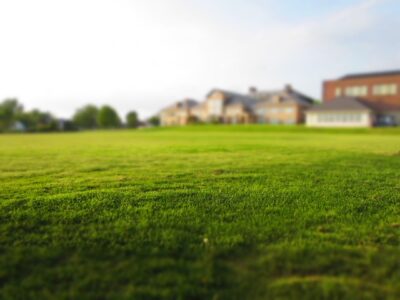Transforming surfaces with a faux wood finish is more than a craft. It’s an alchemy of color, texture, and technique. Whether you’re looking to revamp furniture, add a rustic touch to wall features, or simply indulge in a creative pursuit, the art of mimicking wood can yield strikingly realistic results. This instructional post will take you through the step-by-step process of creating an authentic-looking faux wood finish, suitable for beginners and DIY enthusiasts.
Materials Needed
To commence your faux wood finish project, gather the following materials to ensure you are well-prepared. Using the right supplies is critical to achieving an authentic wood look that both feels and appears natural.
Basic Tools
These tools serve as the foundation for your project and are essential for achieving the finesse and detail that emulate a natural wood grain.
Paint Brushes
Select a variety of high-quality paint brushes, ranging from wide flats to fine tips for detail work. Brushes will be your primary applicators and are crucial for creating smooth base coats as well as intricate graining effects.
Graining Tools
Look for specialized graining tools that can mimic the patterns found in natural wood. These can include graining combs and rockers, both designed to help you recreate the unique lines and knots characteristic of various wood types.
Rags and Sponges
Keep a supply of clean rags and natural sea sponges handy for applying glazes and manipulating the painted surface. These materials are perfect for adding depth and texture to your finish.
Painter’s Tape
Use painter’s tape to protect adjoining surfaces and create clean, straight edges. This will ensure that your faux wood finish is neat and only applied to your desired area.
Paints and Finishes
The selection of paints and finishes is where the real artistry comes into play. Depending on the type of wood you wish to emulate, choose from a range of paint colors, glazes, and topcoats to achieve your desired effect.
Base Coat Paint
This is the foundation color that will be seen through your faux wood finish, so choose wisely. Consider using
Base Coat Paint
The base coat is the initial layer of paint applied to your surface and sets the tone for your faux wood finish. Opt for latex or acrylic paint in a color that resembles the lighter undertones of the wood you’re trying to replicate.
Glaze Mixture
A glaze mixture, often a combination of paint and a glazing medium, is applied on top of the base coat to create translucency and depth. This layer is vital as it allows for the graining tool to do its magic.
Topcoat Sealant
Finish your project with a topcoat sealant to protect your faux wood finish from wear and tear. A good-quality sealant will also add a subtle sheen, mimicking the look of polished wood.
Preparing the Surface
A successful faux wood finish starts with surface painting preparation. Clean your work area and ensure you have ample room to move without the risk of obstructions. If necessary, sand the surface lightly to remove any rough spots or old sealants.
Afterward, follow these steps:
Clean the Surface
Wipe down the entire surface with a damp cloth to remove dust, debris, and any residual materials. Allow it to dry completely before proceeding.
Apply Painter’s Tape
Protect any parts of the workpiece that you don’t want to be painted, such as hardware or edges, by applying painter’s tape.
Prime the Surface
Apply a primer coat evenly over the entire surface. The primer helps the base coat adhere to the surface and provides the proper base for the wood finish.
Choosing the Base Color
The base color lays the foundation for your faux wood finish. It’s important to select the right base color to achieve the realistic wood species you’re aiming for.
Select the Wood Species
Different types of wood have distinct hues, from the dark richness of mahogany to the light tones of pine. Choose the species you want to emulate.
Mix Your Paint
If you can’t find the exact color you’re looking for, you can mix paints to achieve your desired base color. Test the color on a small, inconspicuous area first.
Apply the Base Coat
Use a high-density foam brush to apply the base coat in the direction of the wood grain. Let it dry completely before moving on to the next step.
Creating the Wood Grain
This is the heart of your faux wood finish, where the magic of wood grain comes to life with paint. This step is best done by professionals like Centennial Painter. If you lack time or confidence for this step, it’s best to hire a professional.
Apply the Gel Stain
Using a foam brush, apply gel stain over the dried base coat. Work in sections and use a wood-graining tool to create the grain pattern while the gel is still wet.
Double Graining
For a more natural look, ‘double grain’ the surface. This means using the graining tool twice on the same spot, perhaps with a slight shift the second time.
Blend the Grain
Before the gel stain dries, lightly drag a rag or cheesecloth along the grain lines to soften and blend them for a more realistic appearance.
Add Knots and Accents (Optional)
To add knots or natural accents, dip a small artist brush in undiluted gel stain and apply it to the wood grain. Use a damp brush to blur the edges and create a seamless integration.
Adding Depth and Wood Texture
First, apply lighter paint with a dry brush to highlight the high points of the grain and create contrast. Next, use a slightly damp brush to soften any sections that appear too pronounced. Finally, for an authentic touch, you can opt to add faux wormholes by lightly dabbing a fine brush around a central point.
Finishing Touches
To finish your project, apply a clear sealant for protection. Once dry, remove the painter’s tape to reveal the sharp edges of your rejuvenated wood-like surface.
Follow This Guide to Creating a Stunning Faux Wood Finish Today
With this guide, you now hold the recipe to produce a beautiful faux wood finish that can add warmth and character to any space. Enjoy the process of transforming your items with the rich, timeless allure of wood. Don’t hesitate to experiment and tweak the techniques to match your vision – after all, that’s where the art truly lies.
Go ahead, grab your brushes, and create a world where faux is just as good as the real thing. Ready to explore creative endeavors? Check out our inspiring blog with articles on various topics.
Related Post:







